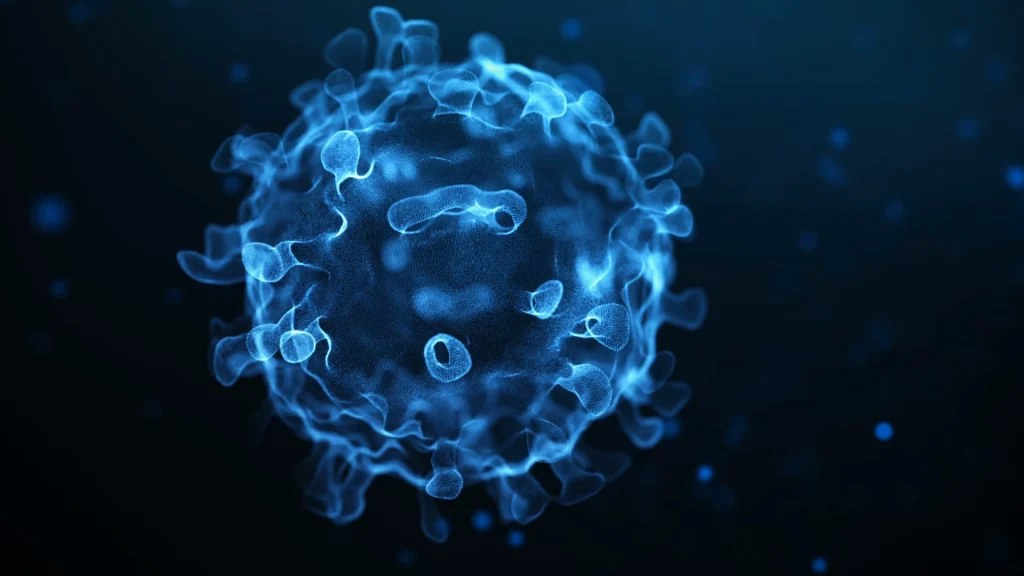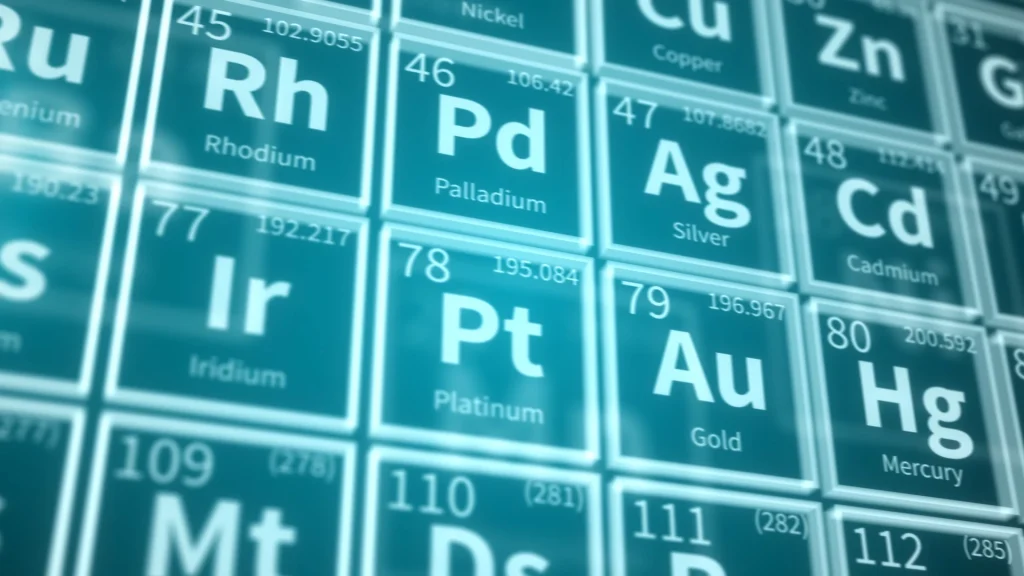SciMed Education
A Brief Introduction to SEM (Scanning Electron Microscopy)
A Brief Introduction to SEM
Scanning electron microscopy, or SEM, produces detailed, magnified images of an object by scanning its surface to create a high resolution image.
SEM does this using a focused beam of electrons.
The resulting images show information about what the object is made of and its physical features.
The instrument which obtains this information about composition and topography is a scanning electron microscope.
As a practical and useful tool, SEM has a broad range of applications, across several industries and sectors. It can analyse both man-made and naturally occurring materials.
What Happens During SEM?
Scanning electron microscopy works by scanning a sample with electron beams. An electron gun fires these beams, which then accelerate down the column of the scanning electron microscope.
During this action, the electron beams pass through a series of lenses and apertures, which act to focus it.
This occurs under vacuum conditions, which prevents and molecules or atoms already present in the microscope column from interacting with the electron beam.
This ensures a high quality of imaging.
The vacuum also protects the electron source from vibrations and noise.
The electron beams scan the sample in a raster pattern, scanning the surface area in lines from side to side, top to bottom.
The electrons interact with atoms on the surface of the sample. This interaction creates signals in the form of secondary electrons, backscattered electrons and rays that are characteristic of the sample.
Detectors in the microscope pick up these signals and create high-resolution images displayed on a computer screen.
How Does a Scanning Electron Microscope Work?
The instrument used for SEM includes these components:
- Electron source
- Anode
- Condenser lens
- Scanning coils
- Objective lens.
The electron source generates electrons at the top of the microscope’s column.
The anode plate has a positive charge, which attracts the electrons to form a beam.
The condenser lens controls the size of the beam, and determines the number of electrons in the beam. The size of the beam will define the resolution of the image.
Apertures can also be used to control the size of the beam.
The scanning coils deflect the beam along x and y axes, to ensure it scans in a raster fashion over the surface of the sample.
The objective lens is the last lens in the sequence of lenses that create the electron beam. As the lens closest to the sample, it focuses the beam to a very small spot on the sample.
Electrons cannot pass through glass, so SEM lenses are electromagnetic. They are made up of a coil of wires inside metal poles.
When a current passes through these coils they generate a magnetic field.
Electrons are highly sensitive to these magnetic fields, which therefore enables the lenses in the microscope to control them.
What are Backscattered and Secondary Electrons
When electrons from the microscope interact with a sample, this can generate different kinds of other electrons, photons and irradiations.
The two types of electrons essential for imaging are backscattered electrons (BSEs) and secondary electrons (SEs).
- Backscattered electrons are reflected back when the primary electron beam interacts with the sample object. These are elastic interactions.
- Secondary electrons are different, because they come from the atoms of the sample, and are the result of inelastic interactions.
What is the difference between these elastic and inelastic interactions?
- Elastic interactions occur when there is no loss of energy of the primary electron, and when this happens, the electrons can change direction but do not change their wavelength
- Inelastic interactions occur when an interaction causes a loss of energy of the primary electron.
BSEs and SEs contain different types of information. BSEs originate from deeper areas of the sample, whereas SEs come from surface regions.
Images from BSEs display high sensitivity to differences in atomic numbers, which will show up as brighter or darker.
SE images contain more detailed surface information.
The scanning electron microscope requires different types of detectors for backscattered and secondary electrons.
Typically, for SEs, this will be an Everhart-Thornley detector. This consists of a scintillator inside a Faraday cage. This detector is positively charged to attract SEs.
For detecting BSEs, the microscope will use solid state detectors, placed above the sample
What Creates the Electrons Used in SEM?
There are three ways of generating the electrons that SEM instruments use:
- Field emission gun – this generates a powerful electric field, which pulls electrons away from their atoms and generates high resolution images. It uses a vacuum design.
- Thermionic filament – inside the microscope, this tungsten heats up at white hot temperatures, until it emits electrons. Under intense heat conditions, its lifetime is about 100 hours.
- Cerium hexaboride cathode – at ten times the brightness of tungsten, this electron source provides an improved signal-to-noise ratio, a better ratio, and has a lifetime of over 1,500 hours.
How is Electron Microscopy Different to Optical Microscopy?
In optical microscopy, you use light and a combination of lenses to magnify an image.
This enables you to view small objects such as cells, but there are limits to the magnification you can achieve, and therefore the materials and substances you can analyse.
Electron microscopy is different because instead of using a beam of light, you use a beam of electrons.
Electron microscopes can overcome the limitations of optical microscopes, because they use a shorter wavelength, which creates a better resolution of image.
With the right amount of light, the human eye can distinguish two points 0.2mm apart without the use of lenses.
This distance is the resolution of the eye.
An optical microscope can magnify this resolution, so that the eye can see points that are closer together than 0.2mm.
The maximum magnification power of an optical microscope is around 1000x. The number of lenses, and their quality, puts a limitation on its capability. But another factor also limits its resolution, and this factor is light.
White light has wavelengths from 400 to 700nm (nanometres).
The average wavelength is 500nm. This gives a theoretical resolution detection limit of about 200 to 250nm.
Wavelength is therefore a limiting factor in the resolution of light microscopes. Electron microscopes overcome this, because the shorter wavelengths of electrons enable better resolution.
The maximum resolution you can achieve with SEM does depend on various factors, such as the electron spot size and the interaction volume of the electron beam with the sample.
Some scanning electron microscopes can achieve resolution below 1nm.
Full sized instruments typically produce resolutions between 1 and 20nm, while desktop models will produce resolutions of 20nm or greater.
What Are the Advantages of SEM?
Scanning electron microscopy has a broad range of research and practical applications.
It provides detailed, topographical images, providing versatile data.
Given proper training, SEM equipment is straightforward to operate, and specialist but user-friendly software supports it. Modern SEM data comes in digital form.
It is a rapid process, and instruments can complete analysis in under five minutes.
There is a degree of sample preparation necessary, but usually this is minimal.
How Do You Prepare a Sample for SEM?
First, it is important to consider the sample’s size, its shape and state, and whether it has conductive properties.
- Where a sample does not have conductive properties, you will need to coat it first using a sputter-coater. Conductive coats include gold, silver, platinum and chromium. As well as non-conductive materials, coating works for samples that will be sensitive to the electron beam, such as plastics.
- To ensure image clarity, you must ensure the sample is clean.
- To maintain its structural details during the process, use a fixative, or, where necessary, dehydrate it by application of alcohol.
- Before placing the sample in the vacuum environment of the microscope it must be completely dry. If it is not dry, water vapourisation can obstruct the electron beam, affecting the clarity of the image.
What Types of Analysis Can SEM Perform?
The main types of analysis that SEM can perform are:
- BSE – Backscattered electron detection
- EDS – energy-dispersive x-ray spectroscopy
- CL – Cathodoluminescence
- EBSD – electron backscatter diffraction.
BSE generates imaging that carries information on the composition of a sample. BSE images provide valuable crystallographic, topographic and magnetic field information.
EDS separates x-rays that are characteristic of different elements, helping to analyse the energy spectrum and chemical composition of materials.
CL produces high-resolution digital images of luminescent materials.
EBSD gives direct information about the crystalline structure and orientation of materials, and can perform analysis on polycrystalline aggregates.
Which Industries and Sectors Use SEM?
The adaptability of scanning electron microscopes makes them ideal for a broad range of scientific, research, industrial and commercial applications.
SEM images provide information on:
- Topography
- Composition
- Morphology
Topography is the distribution of features or parts on a surface of a sample.
Composition is what a sample is made of.
Morphology is the form, shape or structure of a sample.

Biological Sciences
Uses for SEM in biological sciences include identification of bacterial strains and testing vaccines.
It is also applied in genetics.
SEM can also help to measure the effect of climate change on different species, and to uncover new species.

Forensics
SEM is a reliable method for analysing gunshot residue, and for analysing paint particles and fibres at crime scenes.
It can analyse handwriting and print, and is a means of examining the authenticity of banknotes.
It is used to analyse filament bulbs at traffic accident sites.

Geological Sampling
A scanning electron microscope can identify compositional differences of soil and rock samples, and determine the effects of weathering on materials.
SEM is used in archaeological sites for identifying early tools and artefacts, and for dating historic ruins.
It can measure soil quality for agriculture and farming.

Medical Science
SEM is used as a technique to compare blood and tissue samples in patient and control test groups.
It can help to identify viruses and diseases, and to test new medicines.

Electronics
SEM supports microchip assembly by enabling detailed examination of designs, and assisting in the development of new fabrication and production methods.
As microchip assembly materials get progressively smaller, the high-resolution capabilities of SEM have become indispensable in design, research and development processes.
The topographical information SEM provides is also essential for inspecting and testing semiconductors for reliability and performance.
Scanning electron microscopes are essential in the quality control process.
They are also supporting the development of nanowires by improving fabrication methods.

Materials Science
In materials science, SEM is applied across a broad range of areas and disciplines, from aerospace and chemistry to energy and electronics.
Applications include research into alloys, mesoporous architectures, nanotubes and nanofibres.
What to do next?
If you require more information, such as detailed application notes or a conversation with a member of our team, please contact us using the methods provided below.
Contact Us Today
We take great pleasure in assisting you and ensuring you get a prompt response to your questions
Live chat opening hours Mon – Fri 9:15 to 16:30 (UK Time)
